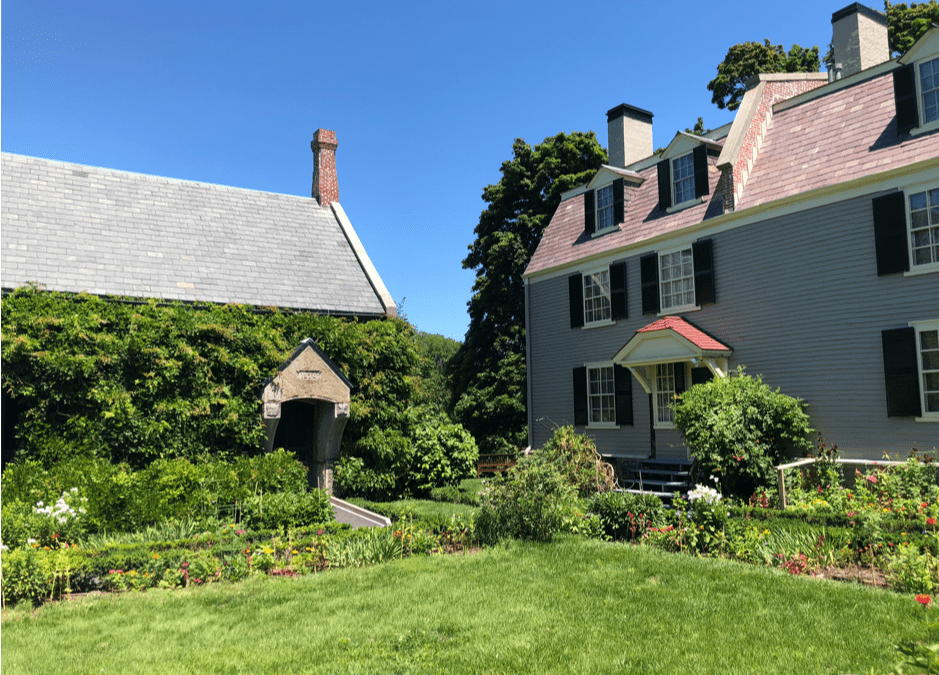Ships, Historic Homes, and Robots – Oh my!
by: Danielle Kronmiller
The progress of the annual collections inventory at Boston National Historical Park is sailing along quite nicely! With the final weeks of my internship in view, we have really closed in on the final items on the inventory lists. Recently, we undertook one of the most exciting, and tiring, days of inventory thus far – locating collections artifacts on board the USS Cassin Young. An impressive Fletcher-class World War II destroyer, she survived two kamikaze hits, went on to serve in the Korean War, and, after years in the US Navy’s mothball fleet, came to the Charlestown Navy Yard – where she was repaired several times during the wars – to be preserved as a floating museum. As a part of Boston National Historical Park, the USS Cassin Young represents the Navy Yard’s 20th century significance, complementing the shipyard’s earlier history represented by the USS Constitution docked just across the pier. While the main deck is always open to visitors, you can only really access the lower and upper decks by guided tour – or to take inventory of the many original artifacts on board the ship!
This includes items as large as 20 and 40-millimeter anti-aircraft guns, down to items as small as ships clocks and battle lanterns, and many things in between. The inventory also includes some reproduction items that have been placed onboard USS Cassin Young by the National Park Service for interpretative purposes, like mattresses in the berthing areas. It was incredible to explore such a storied ship in order to check off items on the inventory, but the experience was also striking in another way. Below deck, with poor ventilation and tight spaces, it gets hot very quickly. The day itself was a bit warmer, but the difference descending below the main deck was marked, and I have a feeling that Boston, even in the summer, is a bit cooler than the South Pacific! The experience really gave me a greater appreciation of the men who lived and worked on the USS Cassin Young for many months and years.

A view of the Stone Library and part of the Old House at Peace field, part of Adams National Historical Park
One of the most incredible things about working in and visiting museums is the variety – there really is something for everyone. This was really drawn into focus for me on two consecutive visits, one to Adams National Historical Park just outside of Boston in Quincy, Massachusetts, and the other to the MIT Museum. Adams National Historical Park, another NPS site, comprises of multiple locations – the birthplaces of presidents John Adams and John Quincy Adams, and the Old House at Peace field, the residence of four generations of the Adams family.
A visit to the Park begins at the Visitor’s Center, where, following an introductory film, a trolley takes you to two 17th-century farmhouses, the birthplaces of the two presidents. The group was guided through both historic buildings by an NPS ranger, where we learned about the early involvement Adams’ in shaping US history. From there, we hopped back on the trolley and visited Peace field, the residence purchased by John Adams following his rise to prominence. Again, a ranger guided us through the historic home, filled with the original belongings of four generations of the Adams family, providing interpretation and history along the way. A personal highlight was the tour’s conclusion in the Stone Library located in the garden next to the house, built by John Quincy Adams’ son Charles. There is a certain feeling of immersion when visiting and touring historic homes and buildings, and I believe this kind of guided interpretation is very successful in bringing history to life.
The following day, I headed to Cambridge for a visit to the MIT Museum, a completely different, but equally as fascinating experience. Interpreting scientific and technological history and advancement is much different than recounting, for example, social and political history. Often with topics like robotics or neuroscience – as in two major exhibits at the MIT Museum – visitors will either possess specialized knowledge, or know nothing more than the basics. In this case, I certainly fall into the latter category! The MIT Museum, from my point of view, did a wonderful job at making the information comprehensible by all audiences. Interpretative texts simplified concepts enough that they were accessible individuals who are less familiar with subjects like programming or mechanical engineering, but did so in a way that was engaging. There was also a fascinating intersection between art and science present in the museum. A special exhibit featuring groundbreaking drawings of the anatomy of the brain not only focused on their scientific significance, but their artistic merit. Another gallery showcased an artist’s whimsical mechanical sculptures, both creatively intriguing and mechanically complex.

These mechanical sculptures were some of the most fascinating objects in the museum. A foot pedal on the floor makes them start moving. The contraption on the right made the wishbone ‘walk’ back and forth!
Though these two institutions are vastly different in their form and content, each preserves and presents invaluable information for the public, providing diverse and complementary lenses through which to view the world. I am very fortunate that my internship has given me the opportunity to explore so many collections in different contexts, both behind the scenes and as a visitor!





